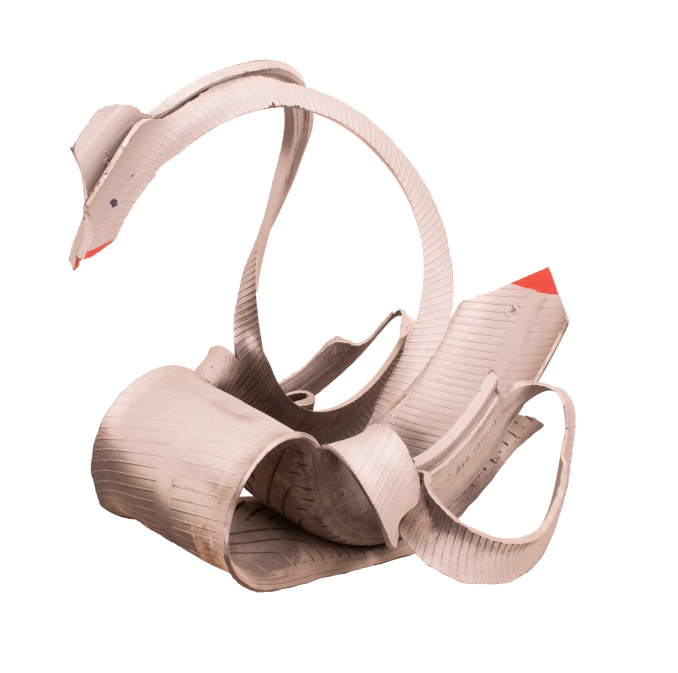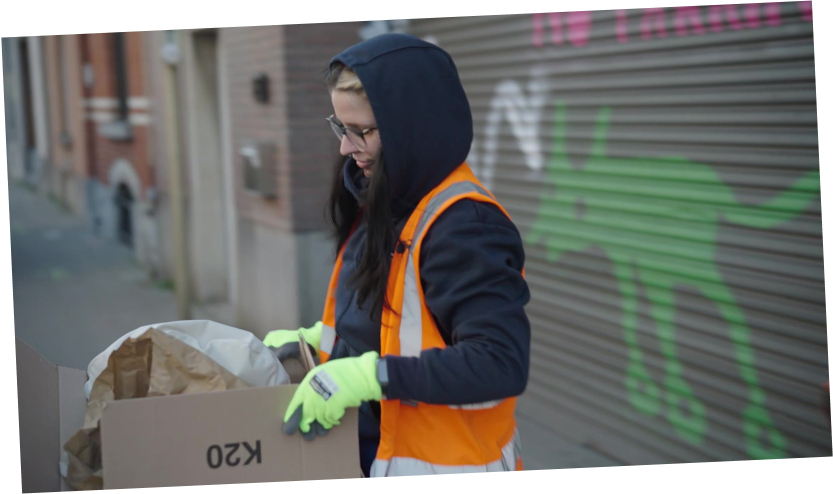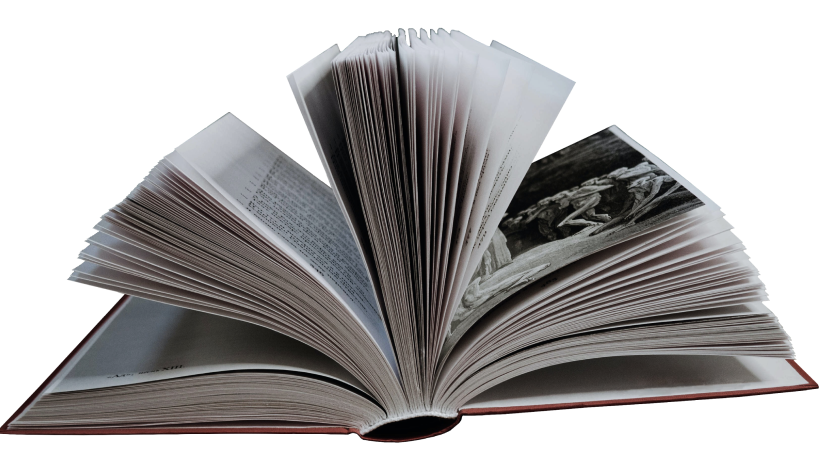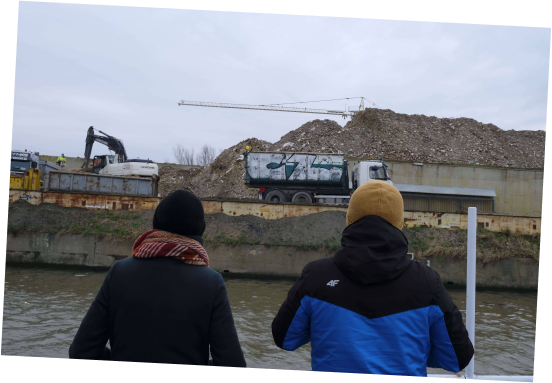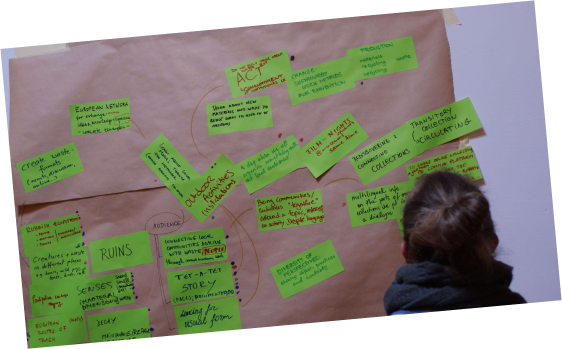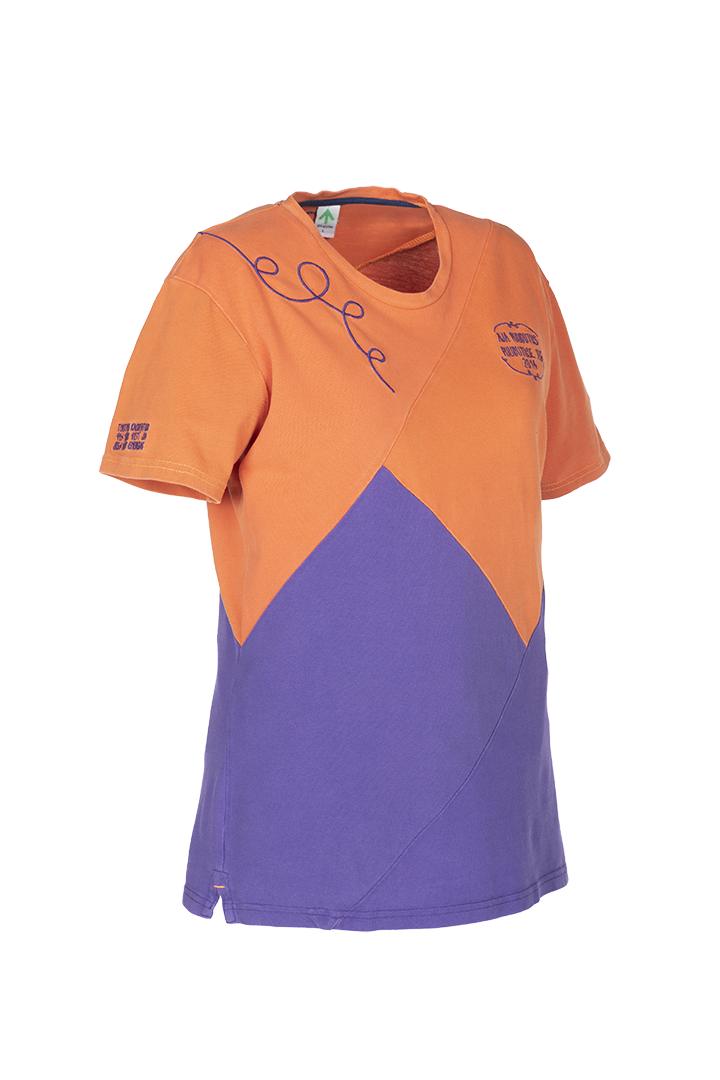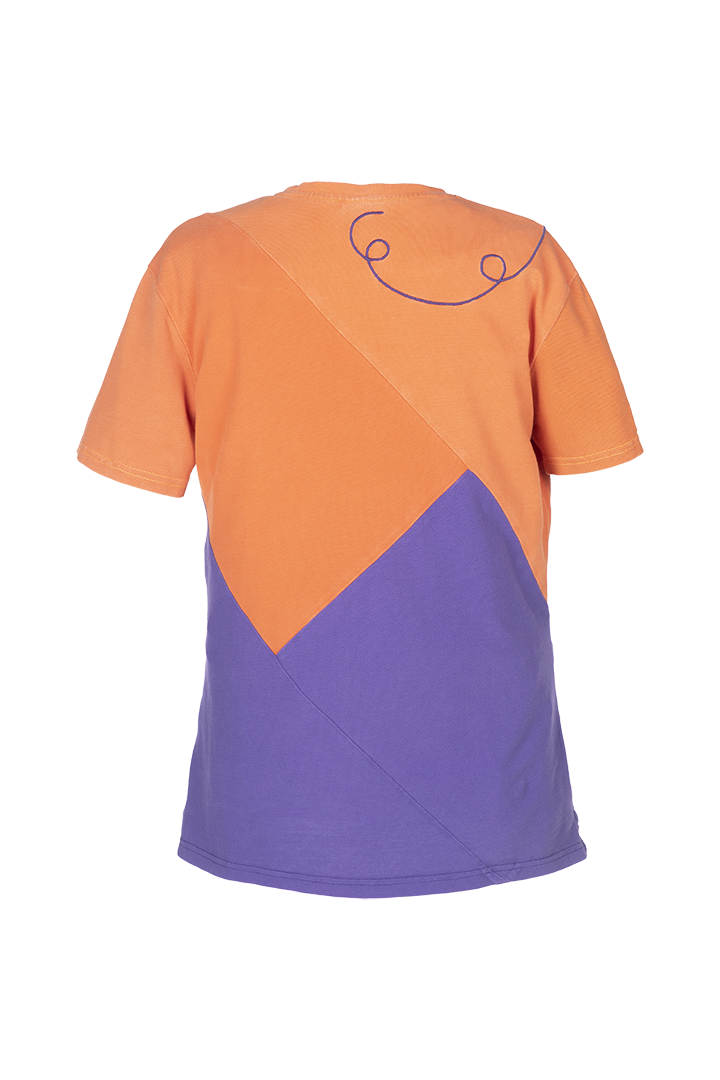Ealaíontóir/Maker Estonian fashion designer, Reet Aus, PhD
Dáta Táirgeadh/Cruthú
2009
Iontráil i mbailiúchán an mhúsaeim
2023
Áit tionscnaimh
Bailiúchán príobháideach
Suíomh reatha
Iarsmalann náisiúnta na hEastóine, Tartu, an Eastóin
Ábhar
Fuaite i mhonarcha
Toise
Dearadh/táirgeadh inbhuanaithe atá neamhdhíobhálach don chomhshaol
Uimhir an Fhardail Loan
Eochairfhocal Dearadh Athchúrsáil Teicstíle
Cóipcheart Músaem Náisiúnta na hEastóine
Stádas I saotharlann teicstíle, a bheith digitithe
Creidmheas Íomhá Músaem Náisiúnta na hEastóine
What is this object about, who are the people behind it?
The most wearable garment in everyday life is the T-shirt, which can carry a message, be a trendy branded shirt or a well-worn but precious item to its wearer due to its story. Upcycling requires several informed partners – somebody with the idea and, nowadays, also a conscious fashion buyer. In 2009 a T-shirt designer took on a challenge to create a T-shirt for the participants in Estonia’s biggest festival – song and dance festival – completely out of textile waste. It was certainly an exemplary eco-sustainable design action in the Baltic countries/Europe, in which more than 20 000 people took part over a short period of time (summer).
Story about how to avoid waste, save clean water by using a different manufacturing process and how to apply ‘keep it & use it’ instead of "throwaway" in the context of textile waste from mass production.
‘Do we know that on average it takes about 310 grams of fabric to produce one garment? Since all of the 23 000 shirts for the 2009 song and dance festival were made from overproduction waste resulting from mass production, we prevented the need to manufacture approximately 7 130 kg of new fabric. As a result we saved 82 570 litres (82 570 m3) of water and 80 040 kWh of energy in total, and prevented 41 989 kg of CO emissions. Estonians can proudly say thank you to all the festival participants, who made a real contribution to changing the global industry and to providing useful base knowledge for developing the European Commission’s new textile strategy.
What places is this object related to, how European/transnational is it?
Places: song and dance festivals, summer events. Reet Aus, PhD (2022) is an internationally renowned professor of Liberal Arts at the University of Tartu, Senior Research Fellow at the Estonian Academy of Arts, participates in international research projects, helped to develop the European Commission’s new textile strategy 2035 and is a researcher in the Sustainable Design and Material Lab DiMa at the Estonian Academy of Arts.
Why and how did this object arrive in the museum’s collection?
The student exhibition organised in the DIY Gallery by the Museum brought together upper secondary students, professionals, scientists and practitioners. Journeys in Time guides a visitor through the Estonian National Museum’s permanent exhibition Encounters, which also covers the topics of Innovation, People and the Environment. In collaboration with the Estonian Song and Dance Celebration Foundation. A modern museum collects stories and objects that reflect the global topics of society – environmentally sustainable views and materials.
At the joint exhibition we analysed with students how cotton from the field turns into landfill, through manufacturing-retail distribution-home consumption and market surplus, and what opportunities the circular economy offers.
What is the relation of this object to waste?
Mass production waste gives increasingly more reason to innovate, to calculate the actual quantities of cotton fibre surplus and find ways to use it before the material becomes unusable rubbish. Plus global questions, how to actively kick-start the circular economy, how to take the knowledge about desirable consumption habits and daily recycling (waste sorting) to the level of citizens.

